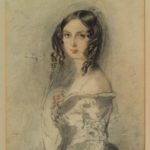Ada Lovelace: history of the "Enchantress of Numbers"
In December 2015 Augusta Ada Byron, the only legitimate daughter of the poet Lord Byron, would have been 200 years old. A symposium at the University of Oxford reviewed this figure and revealed new interesting information to better understand the role played by this Victorian woman in the birth of computer science.

The history
When the philhellene Lord Byron died of fever in Greece, fighting for a romantic ideal, his only legitimate daughter was 8 years old. This was approximately the same number of years since she had seen her father. Her mother, whom Lord Byron affectionately called "the princess of parallelograms", made sure that she received a solid mathematical education. The most widespread romantic vision of this part of Ada Lovelace's life tells us that, jilted by the womanizer that Lord Byron was, her mother tried to bury the passions of letters under grids of numbers and formulas.
However, Augusta Ada Byron, who would become Countess of Lovelace after she married William King, ended up managing to merge the apparently antagonistic currents that flowed through her predecessors.
Ada met Charles Babbage at a party, when he had not yet married. At this event Babbage presented his first model of the Analytical Engine to Ada Byron and her mother. This was an embryonic computer project that could never be carried out. However, the "Enchantress of Numbers" (nickname that Babbage gave Ada Lovelace during their long history of correspondence) is known as the first programmer precisely because of her contributions made in the theoretical creation of a computer that could free the human mind from intellectual burden.

Carl H. Pforzheimer Collection of Shelley and His Circle, The New York Public Library. "Ada Byron" New York Public Library Digital Collections.
The impact
After talks given by Babbage in Turin, Luigi Menabrea, engineer and mathematician who would later become the Italian Prime Minister, published an article in French that Ada Lovelace translated into English. It was Babbage himself, amazed she had not written something original about a subject she knew firsthand, suggested she make notes in the essay with her own ideas. Lovelace's notes ended up being longer than Menabrea's essay, and constituted the first public document in which the programming of a computer was exhaustively debated. And it stayed that way for over a century.
This is what led the celebrated figure of Ada Lovelace to be called the first programmer. Although it has recently been discovered that some of Babbage's writings prior to the publication of Lovelace's work contemplated her ideas, Ada Lovelace is still considered the first programmer, the visionary who established that "The Analytical Engine weaves algebraical patterns just as the Jacquard-loom weaves flowers and leaves", a simile that has its roots in the punch cards that were used to program these early machines, but also in the difference between the Analytical Engine and the previous Difference Engine.
Ada Lovelace was considered, in her exchange of letters with Charles Babbage an "exhibitor" of the engineer's work. There is absolutely no argument about the work and the idea of the Analytical Engine. However, she advocated his "great, general and metaphysical insight", so she ended up suggesting to Babbage to take charge of everything around the machine so that he could focus "on performing the work". Babbage refused, but this led to a friendship that would last a lifetime.
Lovelace's algorithm for calculating Bernoulli numbers was not the first computer program ever conceived, but it is the best known. And Babbage's work that preceded it had conceptual restrictions such as the idea that the Analytical Engine could only work with numbers, while Lovelace thought it could also be done with symbols, among other things.
The legacy
The figure of Ada Lovelace was rescued from oblivion when, after the first third of the twentieth century, the work of Alan Turing merged mathematical logic with universal computing. Turing himself gave the name Lady Lovelace's Objection to his maxim that Artificial Intelligence cannot generate anything. An image of Ada Lovelace appeared in all certificates of authenticity for Windows 95, and today there are different initiatives bearing her name celebrating the advancement of women in the fields of mathematics, science and technology, including Ada Lovelace Day (October 11).
While in recent times deciding the identity of the first programmer in history has turned into a matter of gender, the important thing is to recognize the work performed by the woman who transgressed the established limits not only in the human mind, but also in Victorian society. An example for everyone, but also a reminder that technology and especially programming are not unique skills of a particular sex.